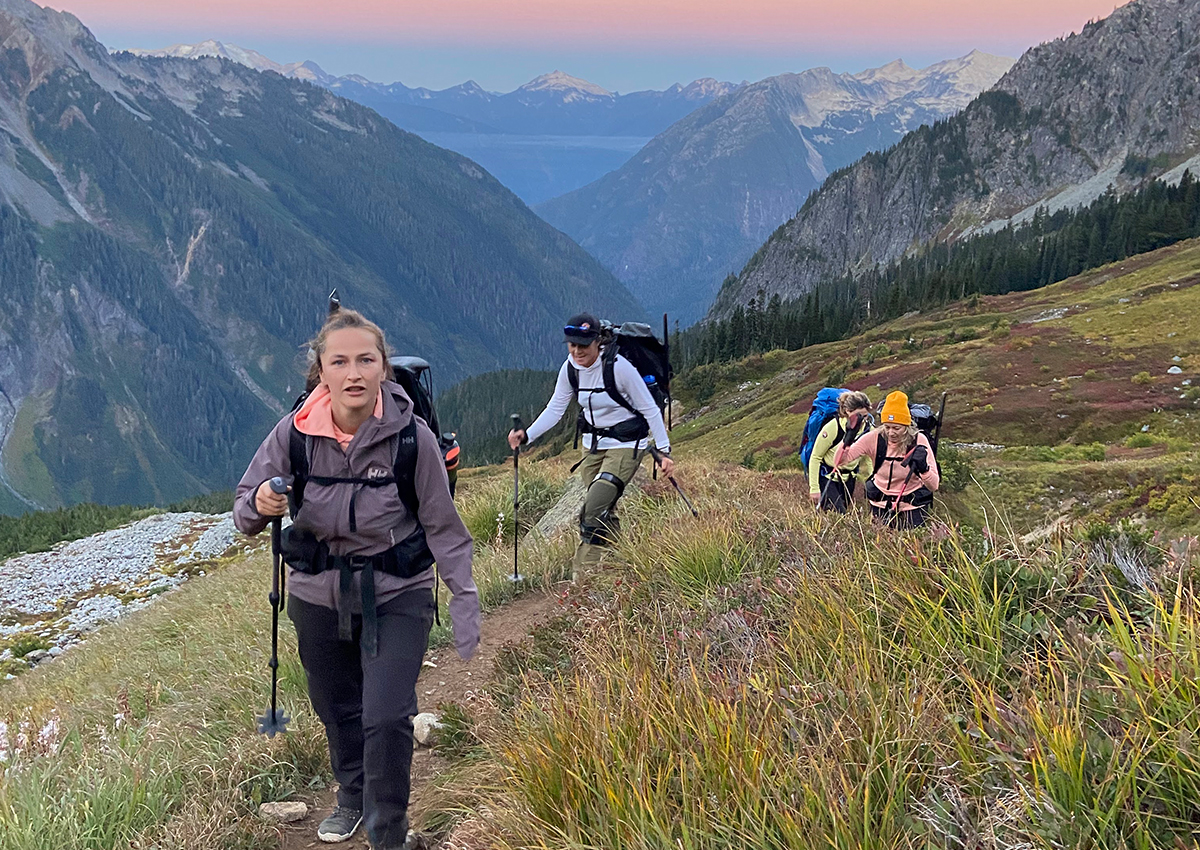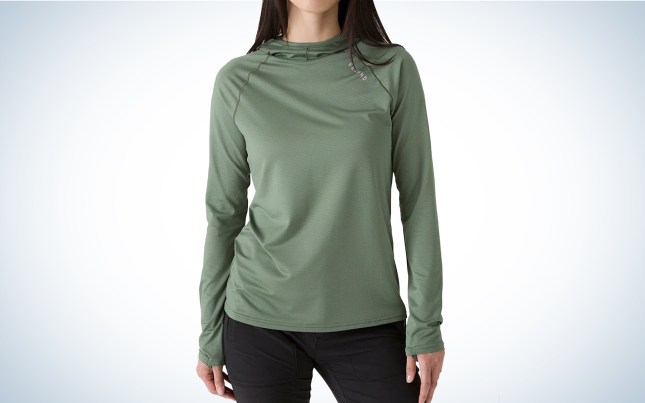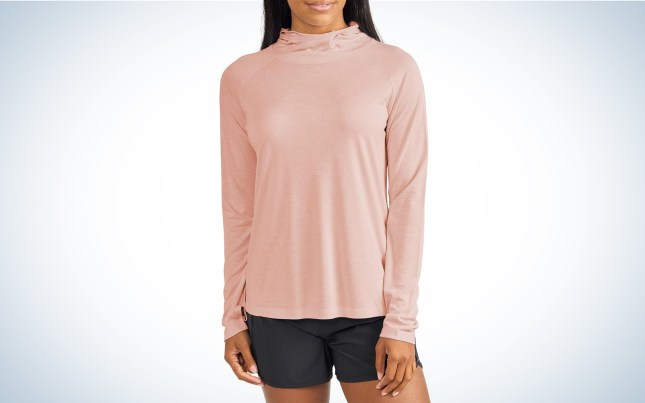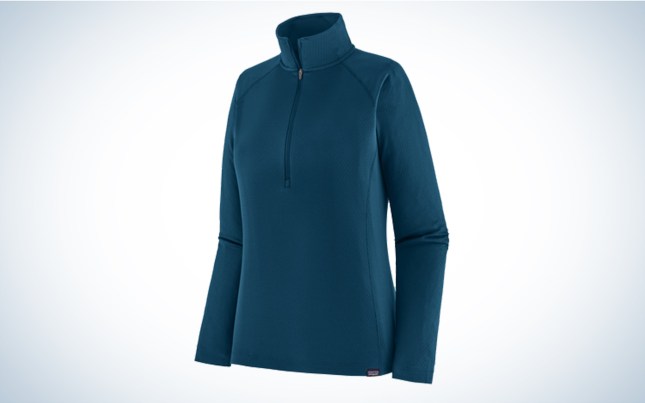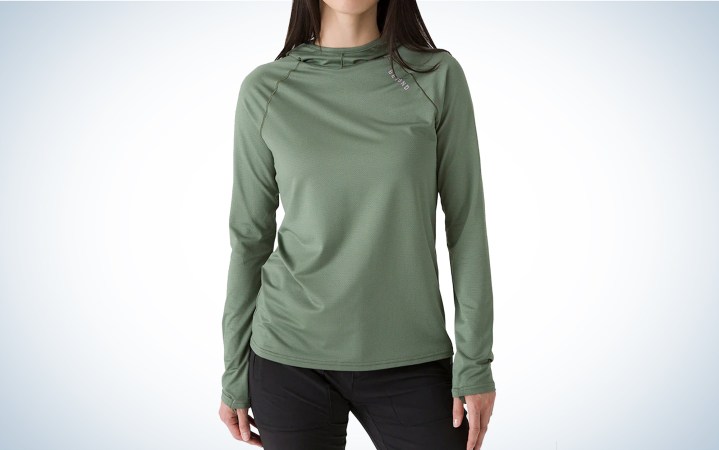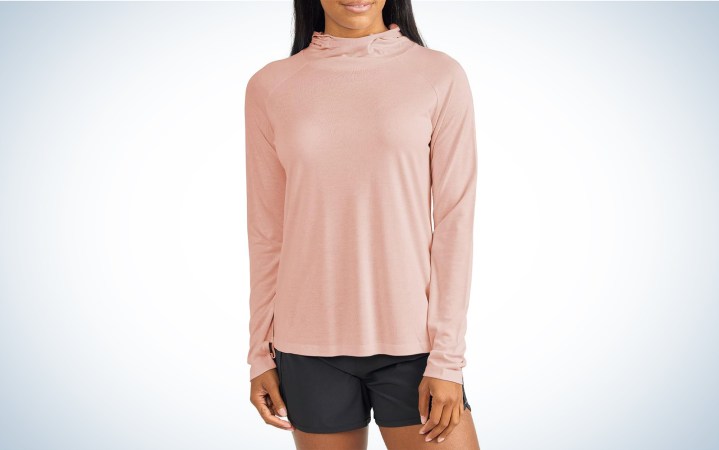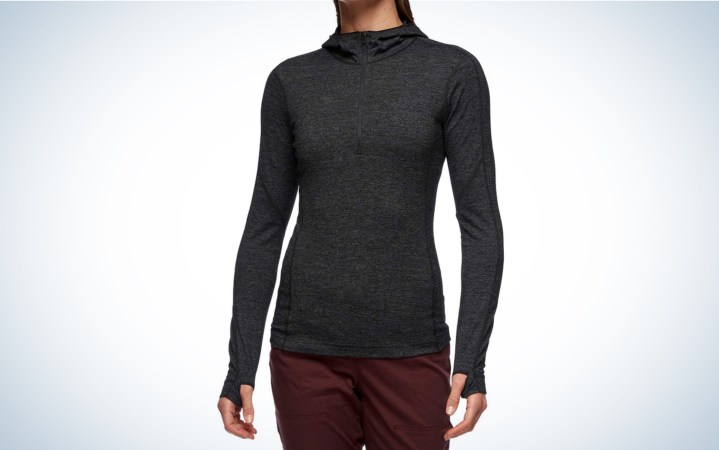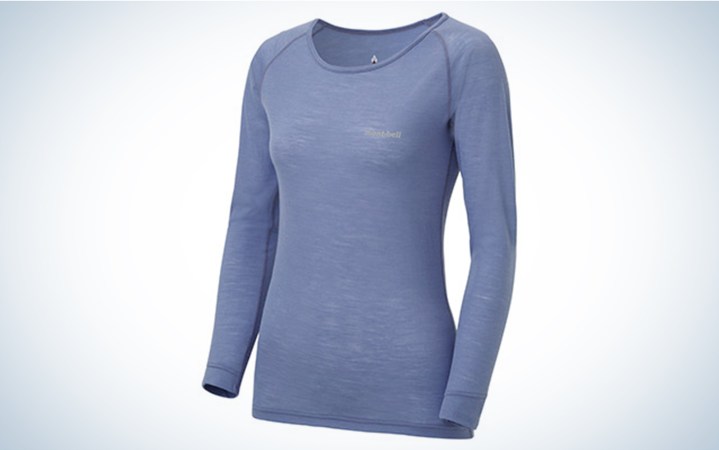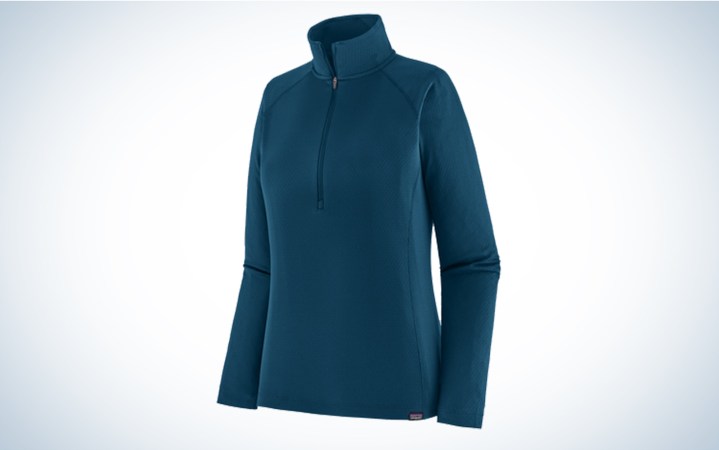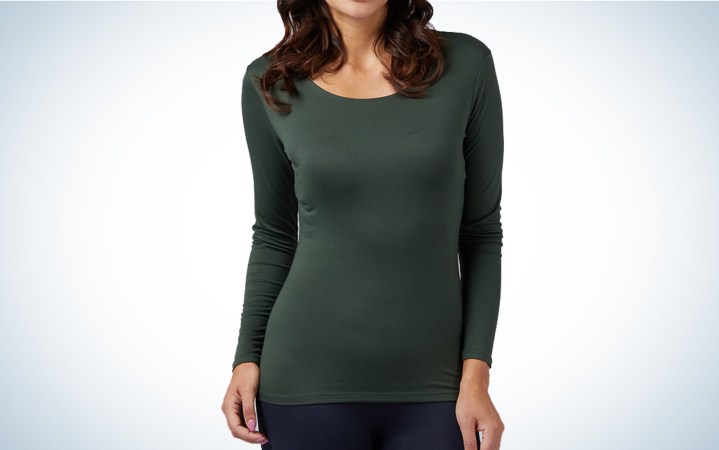We may earn revenue from the products available on this page and participate in affiliate programs. Learn More ›
A great base layer is essential to operating at peak performance in the outdoors. Sure, we all know that wearing cotton is bad: it holds onto moisture like no one’s business and it can’t insulate worth a damn, practically guaranteeing that you’ll be freezing as soon as there is the slightest breeze, But a great base layer does more than help regulate your sweat levels and protect you from a sudden drop in temperature. It can stay comfortable for hours at a time—even days or weeks. It can cool you off when temps rise during a big ascent. And it can even keep the stink out (I swear). To find the best base layers, we tested top contenders from Black Diamond, Patagonia, Free Fly, Beyond, Montbell, and more over the course of a year to see which were the ones we returned to again and again.
- Best Overall: Beyond Hooded Geo-T
- Best for Hot Weather: Free Fly Bamboo Lightweight Hoodie
- Best for Thru-Hiking: Black Diamond Solution 150 Merino
- Best Lightweight: Montbell Super Merino Wool
- Best for Shoulder Season: Patagonia Capilene Midweight
- Best Budget: 32 Degrees Heat Lightweight Baselayer
How I Tested the Best Base Layers
My test of the best base layers took a number of criteria into consideration: thermal regulation, moisture management, comfort, price, and durability. One factor I didn’t consider for the purpose of this test was heat retention. If you are looking for a warm base layer (either because you run cold or you are planning to spend significant time outdoors in the late shoulder season or winter), check out our stories on the best thermal underwear for women and the best thermal underwear for men.
I’ve been testing the best base layers for over a year, on everything from rainy trail runs to solo backpacking in the alpine, river rafting to peak bagging. Temps have ranged from scorching sun to sleet, and everything in between. While I don’t sweat a lot naturally, I worked up a serious sweat wearing all of the base layers in this story.
Additional feedback was acquired during the Outdoor Life test of the best ultralight tents and the best ultralight backpacks with a variety of testers to garner feedback to better understand what different features and attributes are important to hikers and backpackers.
Best Base Layers: Reviews & Recommendations
Best Overall: Beyond Hooded Geo-T
Best Overall
Beyond Hooded Geo-T
Key Features
- Fabric Content: 84 percent biodegradable polyester, 8 percent Ionic (X-Static), 8 percent elastane
- Weight: 8.2 ounces
- Available Sizes: Men’s S-2XL; Women’s S-2XL
- UPF 50
- Top only
Pros
- Excellent thermal regulation during vigorous activity
- Very effective moisture management
Cons
- Synthetic material gets pretty stinky
The Beyond Geo-T is by far the most effective base layer I tested. I’ve worn the Beyond Geo-T on everything from early morning starts in the alpine to trail running when the mercury was pushing 80 degrees to mushroom foraging on a steep slope with a heavy fleece layer on and have been comfortable, cool, and dry in every scenario. Its wicking capabilities and thermal regulation properties are second to none. Most of the time I don’t think about this shirt at all when I’m wearing it—some of the highest praise there is.
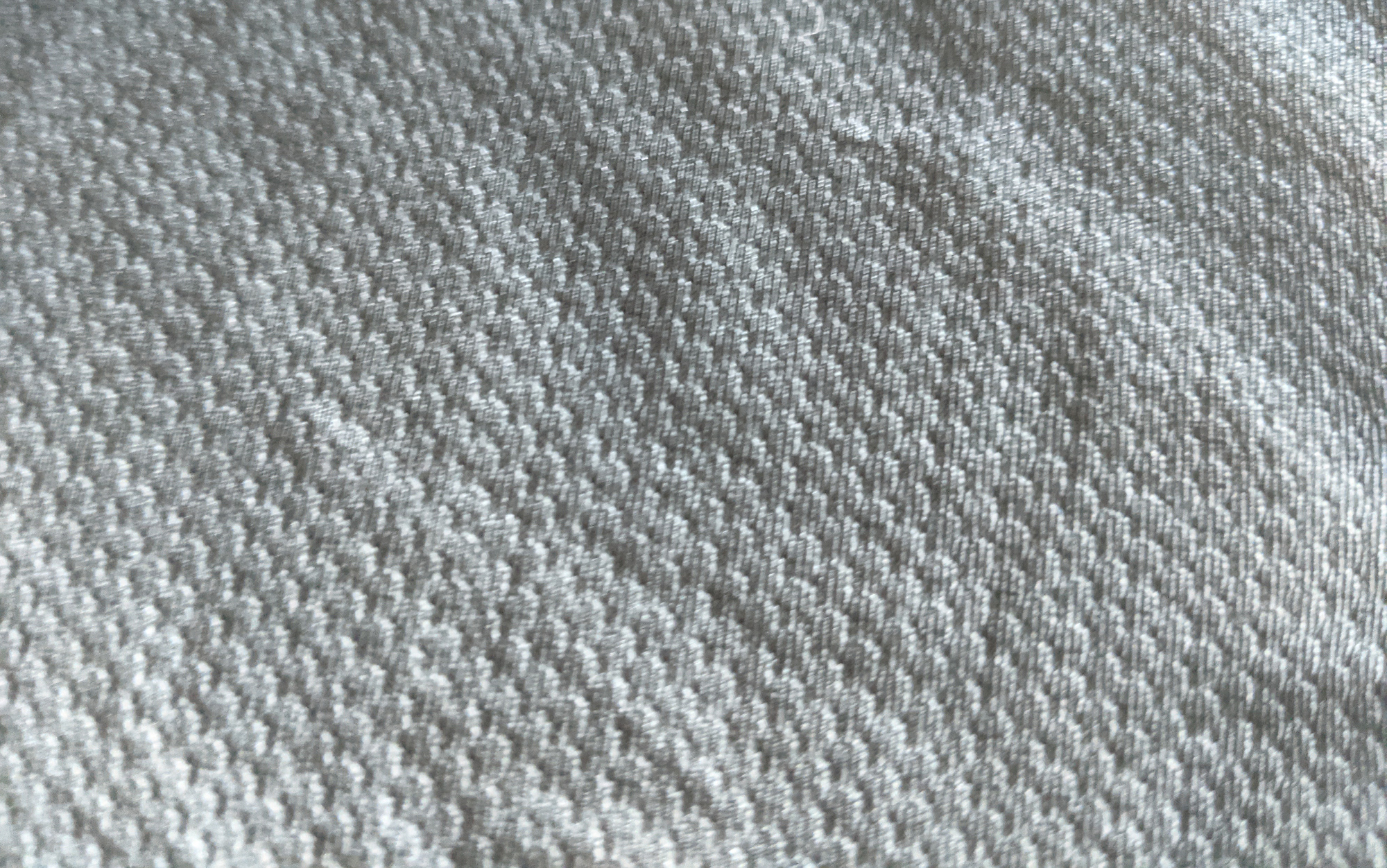
There are a few factors that make the Beyond Geo-T so effective at what it does. The first is that it’s made from polyester (a naturally hydrophobic fiber) that has been treated with an additional finish to further enhance wicking. It also has a more unusual knit, called a pique knit, that looks like a honeycomb pattern. The thicker parts of the knit absorb the sweat from your body quickly, which then spreads out to the interior of the honeycomb. Here the lower density knit allows the moisture to evaporate to the outside quickly, keeping you both cool and dry. I have worn this shirt on days when I did not think I could comfortably wear a long-sleeve and been perfectly dry. It really works.
Of course when I say this base layer is excellent at shedding heat and sweat, that is a two-way street. This would not be my first choice for a standalone layer for late shoulder season or the winter months. Keep this one in your arsenal for warmer days or when you plan to stay active. I also noted that despite incorporating silver ions into the fabric—which can help to reduce stink by binding to the bacteria that produce that typical outdoors funk—this shirt got pretty stinky, and even retained some odor after washing.
Best for Hot Weather: Free Fly Bamboo Lightweight Hoodie
Best for Hot Weather
Free Fly Bamboo Lightweight Hoodie
Key Features
- Fabric Content: 70 percent viscose from bamboo, 30 percent polyester
- Weight: 7 ounces
- Available Sizes: Men’s S-3XL; Women’s XS-2XL
- UPF 20
- Top only
Pros
- Dries quickly
- Very comfortable
- Doesn’t absorb odors
Cons
- Less durable than other options (Some pilling around high-use areas)
- Less functional for layering systems
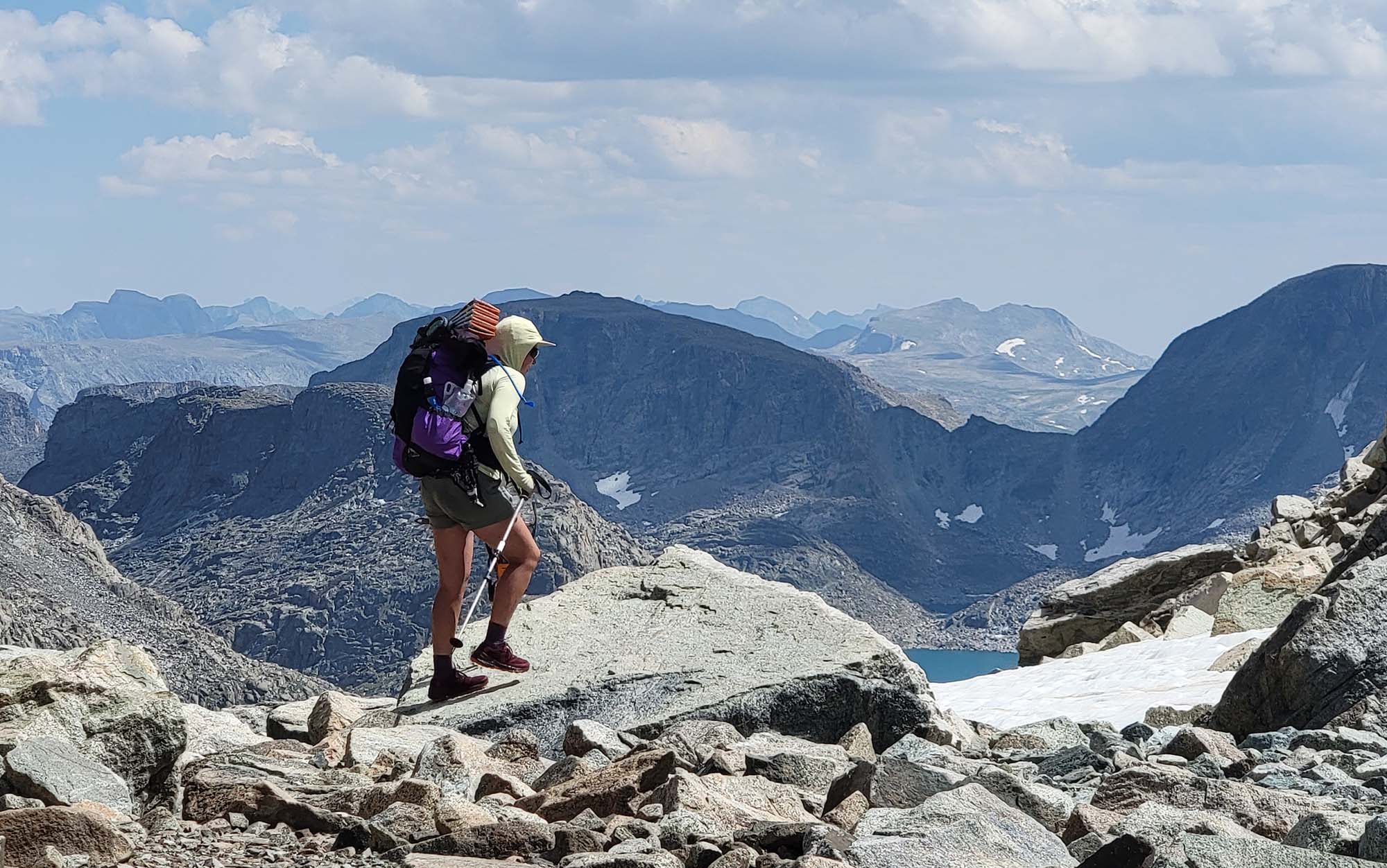
It would be hard to overstate how comfortable Free Fly’s layers are. Even after days of use, I’ll still put on one of their layers instead of switching to a more classic merino or synthetic option. Once I even pulled a top out of the dirty laundry to take with me on a 4-day backpacking trip. They just feel good, no matter how grody they actually are. They also don’t hold onto odors, functioning about as well as high-percentage merino base layers at keeping the stink at bay. The secret here is the high viscose from bamboo content, which is naturally antimicrobial (like merino wool) and soft to the touch (unlike merino wool).
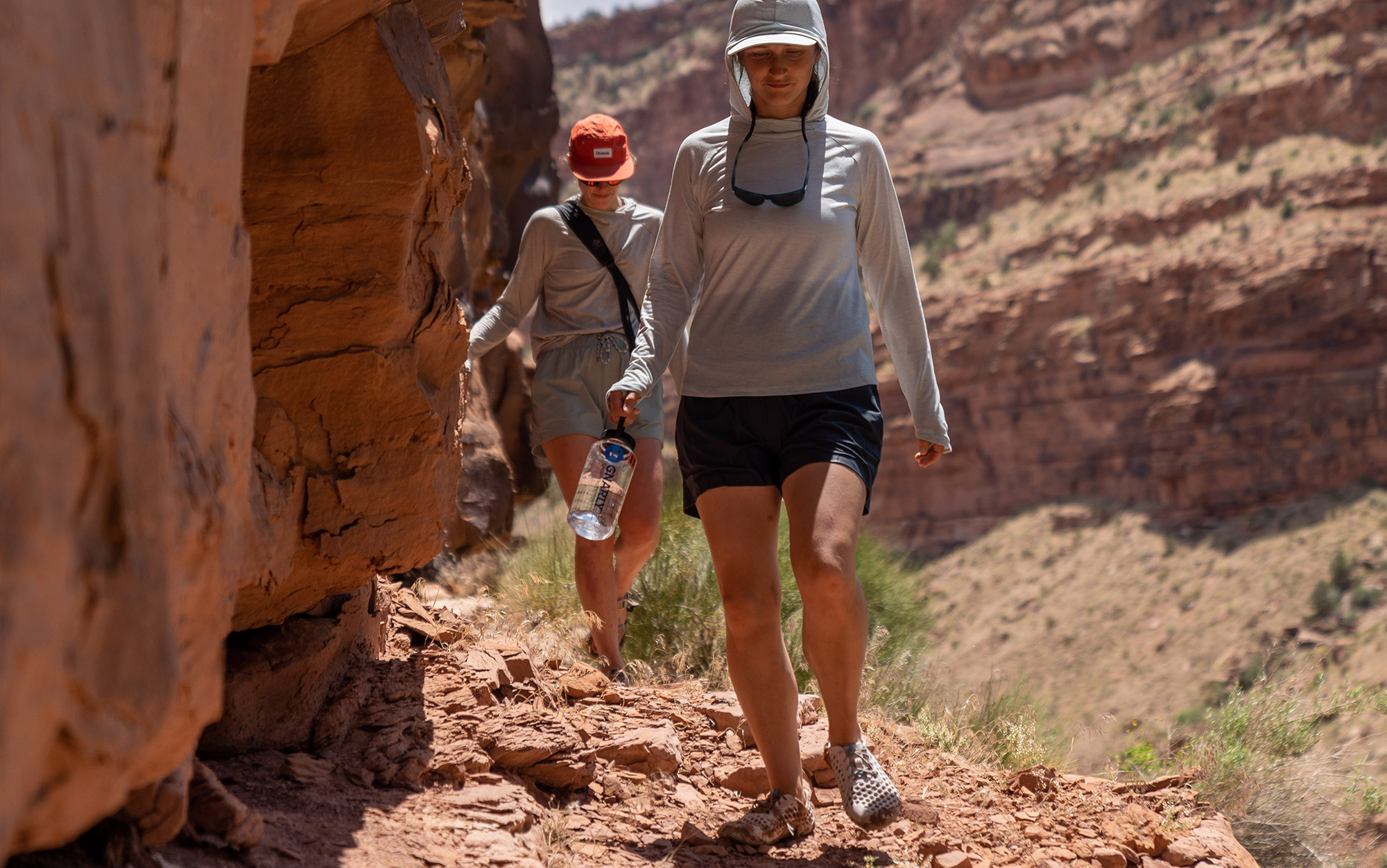
In the heat of summer, when I know I’ll be out on a hike or camping under some strong sun, this is what I’d bring every time. Its combination of breathability and comfort is unparalleled. But as soon as the sun goes down, or even just behind a cloud, this layer has to go. Not only does the Free Fly Bamboo Lightweight Hoodie not retain heat, the natural breathability of bamboo and loose cut of the shirt—attributes that made it so successful when the sun was pounding—will start to make you cold when the weather shifts. I’ve also noticed that this shirt doesn’t wick as fast as either the Beyond Geo-T or high-quality merino layers, meaning it’s relying on that breathability to keep you dry.
Best for Thru-HIking: Black Diamond Solution 150 Merino Half Zip Hoody
Best for Thru-HIking
Black Diamond Solution 150 Merino Half Zip Hoody
Key Features
- Fabric Content: 78 percent merino, 22 percent polyester
- Weight: 6.6 ounces
- Available Sizes: Men’s S-XL, Women’s XS through XL
- No UPF rating
- Pair with Black Diamond Solution 150 Merino Full-Length Bottom
Pros
- Comfortable at a wide range of temperatures
- Thumbholes and hood helped it double as a sun shirt
Cons
- Expensive
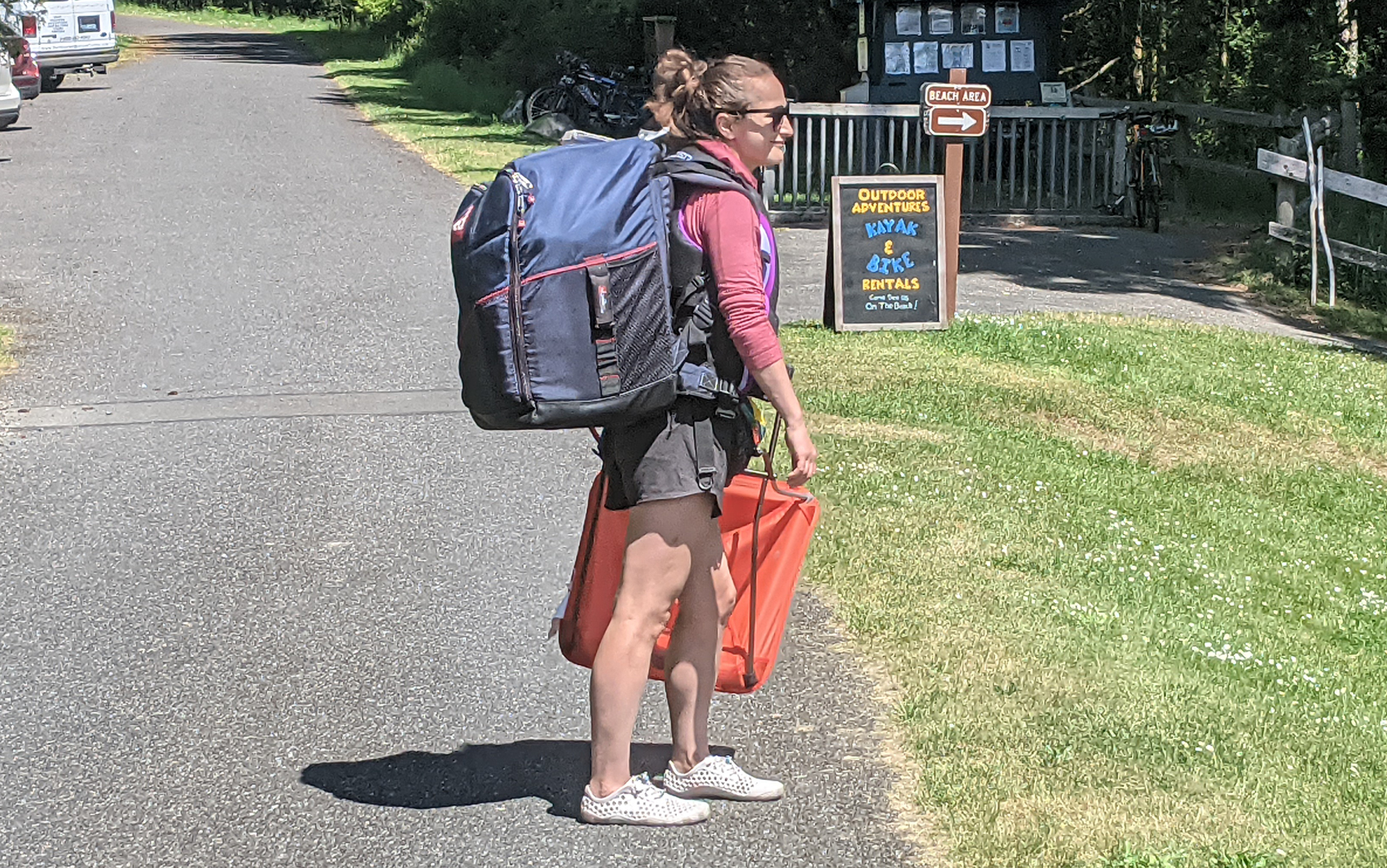
The Black Diamond Solution 150 performed exceptionally well across the full spectrum of summer conditions, from alpine snow to humid and hot. The thickness of the knit and high percentage of merino wool hit the sweet spot for temperature regulation, so that heat was dispelled while working up a sweat on an uphill climb, while keeping the brunt of a cold wind at bay when you hit the crest.
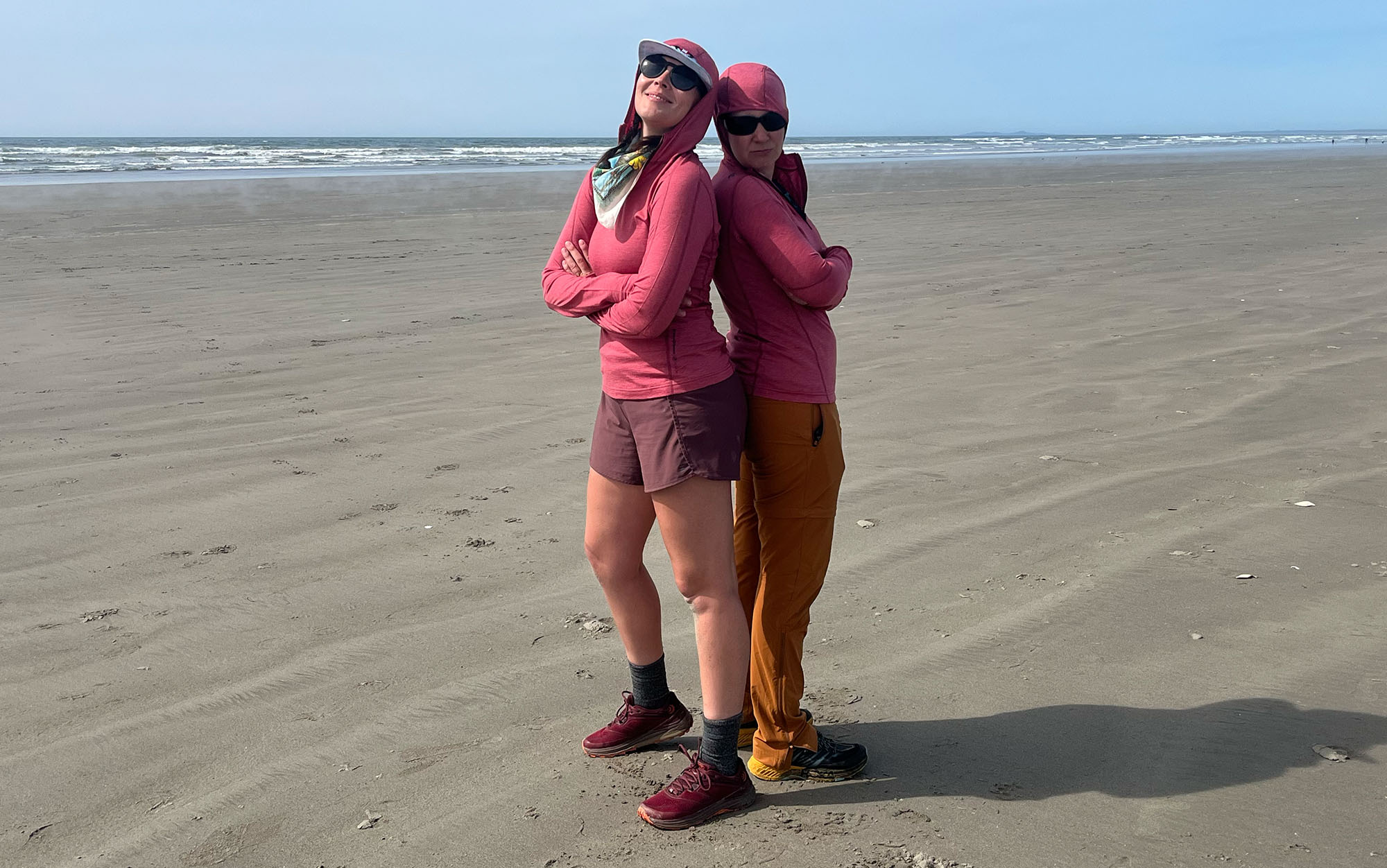
The thumbholes and hood provide excellent coverage, so that the Black Diamond Solution 150 performed just as well as a sun shirt as it did as a base layer. Even after multiple days of use (the record was five days between washes), it still felt soft against the skin and was noted to be comparatively more form-fitting than similar layers like the Ibex Woolies Tech or the Outdoor Research Alpine Onset Merino. It’s even effective at preventing mosquitoes from biting through, something not true about the majority of base layers out there.
Best Lightweight: Montbell Super Merino Wool Lightweight Shirt
Best Lightweight
Montbell Super Merino Wool Lightweight Shirt
Key Features
- Fabric Content: 85 percent merino wool, 15 percent polyester
- Weight: 4 ounces
- Available Sizes: Men’s S-XL, Women’s S-L
- No UPF rating
- Pair with Super Merino Wool Lightweight Tights
Pros
- Soft and comfortable
- Lightweight and thin material will layer under almost anything
- Affordably priced
Cons
- Fabric is thin to the point of being sheer
- Limited sizes available
The Montbell Super Merino Wool Lightweight Shirt and Tights has a soft, comfortable skin feel, great thermoregulation, good fit, and affordable price. Its great skin feel was especially surprising given the high percentage of merino wool that hugs the body, and I’ve found that this layer works equally well as a sleep layer and a base layer while hiking. The thin material is helpful for both quickly wicking sweat away from your skin and reducing bulk when you layer other clothing on top of it.
The high merino wool content meant I can go longer between washes with this layer than with the synthetic thermal underwear I’ve tested; but even so, it’s been in the wash plenty as I use it all the time. Fortunately, it still looks the same as when I first received it in the mail: no pilling, no stray strings, no holes. This is doubly impressive given that this layer is so thin it’s practically sheer.
Best for Shoulder Season: Patagonia Capilene Midweight
Best for Shoulder Season
Patagonia Capilene Midweight
Key Features
- Fabric Content: 100 percent polyester
- Weight: 4.3 ounces
- Available Sizes: XS through XXL
- No UPF rating
- Pair with Patagonia Capilene Midweight Bottoms
Pros
- Comfortable
- Reasonably affordable
- Easy to throw on over existing clothing
Cons
- Doesn’t layer as well as other thermal underwear options we tested
- No merino wool content
- A little too warm for hot conditions
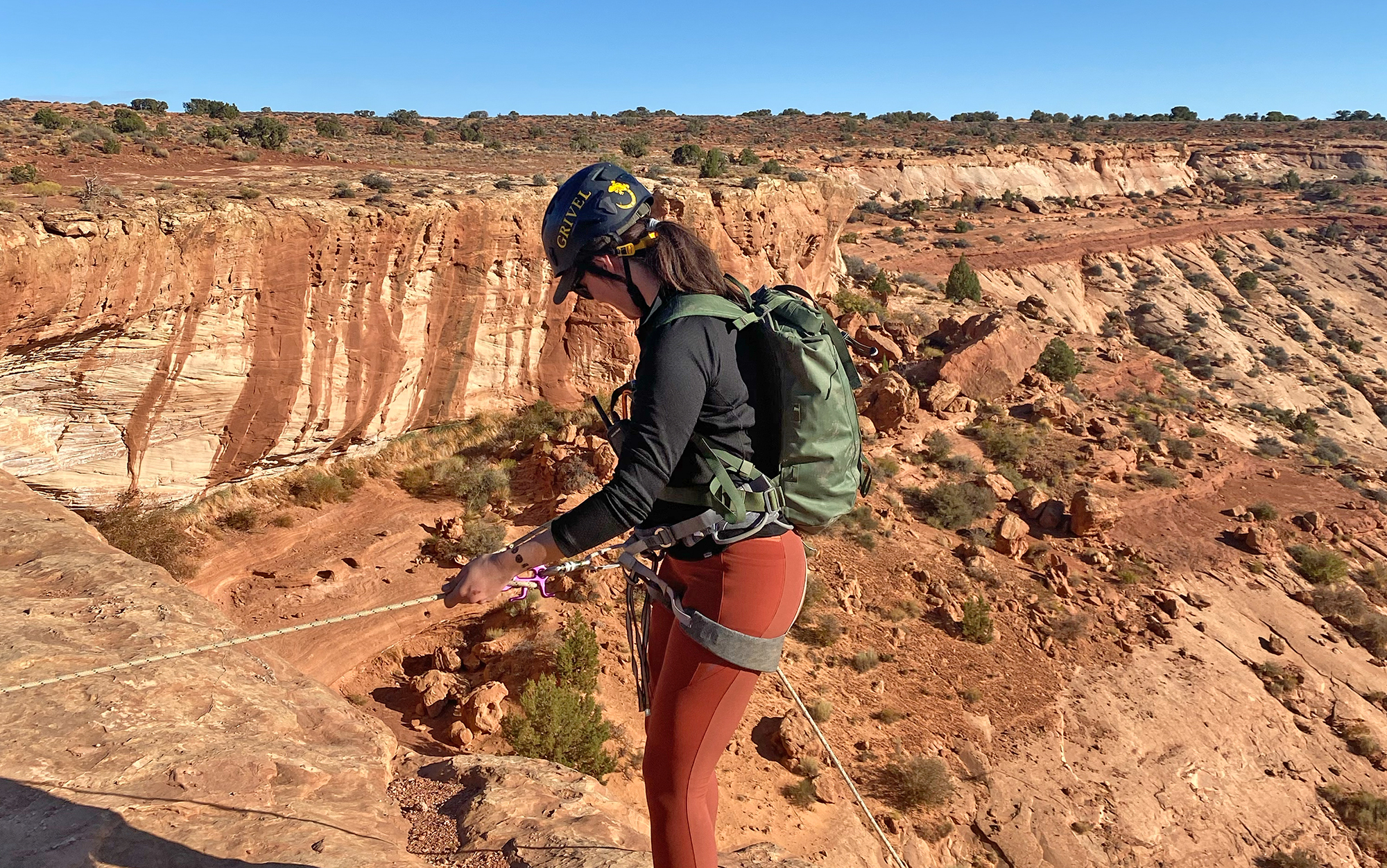
People who spend a lot of time outdoors typically end up with multiple base layer options. That’s because the layers that perform best in the hottest conditions (like the Free Fly Bamboo Lightweight Hoodie) typically don’t have the insulative powers to handle shifts in temperature as you hike uphill in full sun, and then descend into the shade.
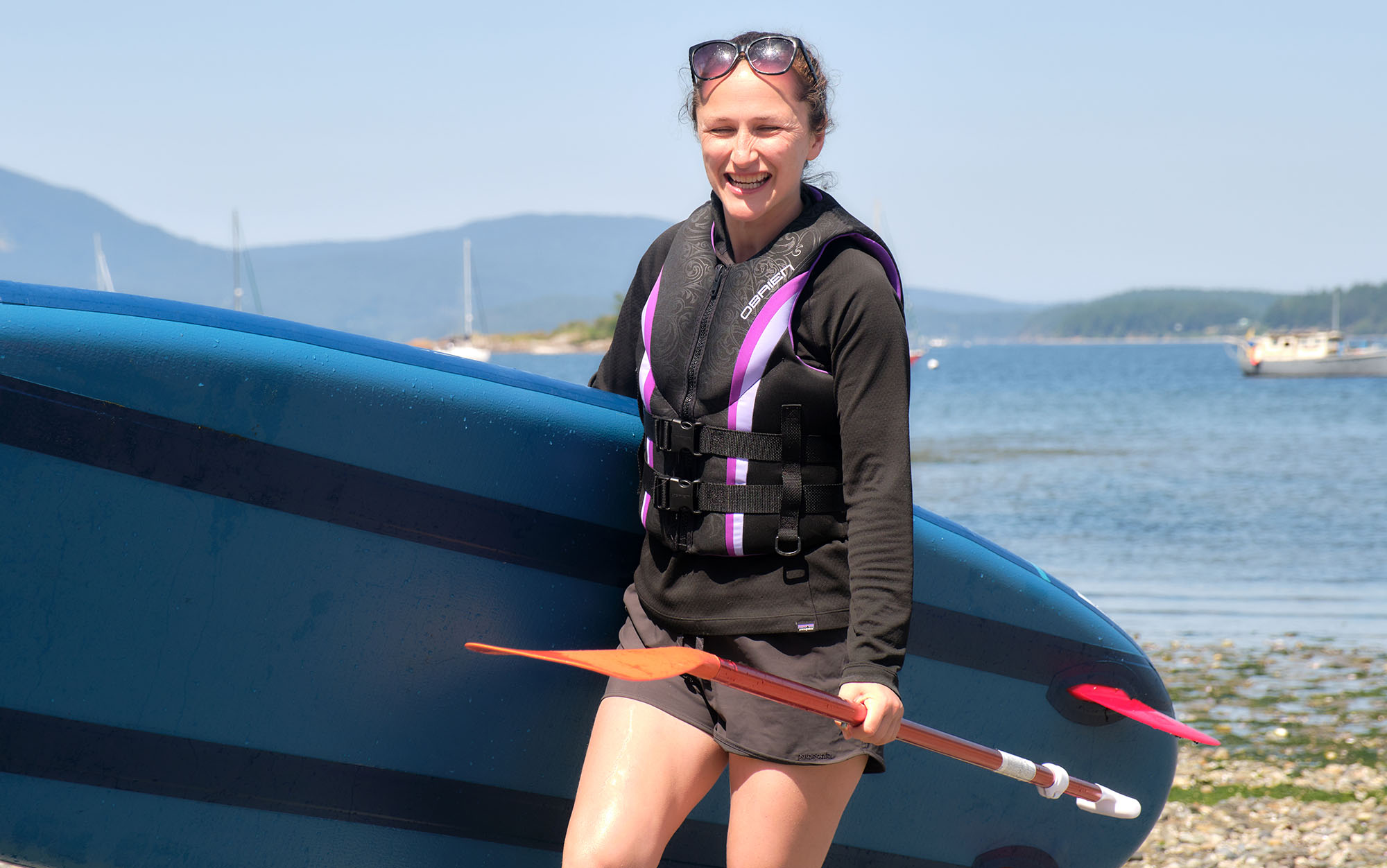
This is why you need a layer like the Patagonia Capilene Midweight. It’s highly effective at temps upwards of 70s (60s if you are being active), but provides an adequate amount of insulation for when the temps start to dip into the 50s, and can enhance the insulation of a shell layer or puffer layer. I’ve stayed dry in this layer while testing the best inflatable paddleboards on the ocean in full sun, and stayed warm while using this layer as an extra boost for some shoulder season trail running. It still looks good after dozens of washes (just a little pilling) and, for a fully synthetic layer, does not particularly hold onto excess smell. Even better: It’s an affordable option for people looking to add a do-it-all layer to their wardrobe.
Best Budget: 32 Degrees Heat Lightweight Baselayer
Best Budget
32 Degrees Heat Lightweight Baselayer
Key Features
- Fabric Content: 90 percent polyester, 10 percent spandex
- Weight: 3.5 ounces
- Available Sizes: Men’s S-XXL; Women’s XS-XXL
- No UPF rating
- Pair with 32 Degrees Heat Lightweight Baselayer Leggings
Pros
- Fitted and thin for layering
- Anti-odor
- Moisture wicking
Cons
- Synthetic material
These highly affordable layers are skin-tight, sheer, and stretchy. This makes them great for layering. If you’re looking for a light, quick-dry layer to keep you warm while active, the 32 Degrees Heat Lightweight Baselayer is great. I’m particularly grateful for them when I wake up in a tent to a morning chill. I know I’ll be warm after an hour of hiking, but it’s too cold to start in shorts. I can wear the top and bottoms underneath shorts for a comfortable start and I won’t have to immediately strip once I start moving.
While not as warm as a thicker or merino layer, these are plenty warm when you’re active. They don’t smell after a few wears and are so thin and breathable that moisture quickly evaporates. I’ve had my pair for seven years. The top has no holes, just some light pilling. The leggings have quite a few runs and holes (I should’ve thrown them away last ski season).
Things to Consider Before Buying Base Layers
Weight
While typically backpackers or backpack hunters might be counting grams in an effort to save weight, the weight of your base layers typically depends on thickness of the fabric. Standard base layers are appropriate for summer or high-exertion activities, while midweight layers are often seen on alpine adventures or shoulder season. Heavyweight layers are best saved for the winter months, or when you plan to be unusually sedentary for stretches at a time, such as while hunting.
Moisture Management
Everything from the fibers used to the type of knit to the finishes washed into the fabric can affect a base layer’s ability to hold onto or dispense with moisture.
Odor Control
Despite the anti-odor claims of silver washes like Polygiene, I have never been impressed with how well these work. Even out of the box, they can pick up a noticeable stink without much effort, and over time, as the wash dissipates, the smell can start to permanently stick to the clothes. Base layers with a high merino wool content have long been known to keep odors down (or eliminate them entirely). During testing, I was also impressed to find that the base layers made from a high percentage of viscose from bamboo also managed odors well.
Skin Feel
The base layer is the closest to your skin. The best material for odor control, thermoregulation, and moisture management is merino wool, which is naturally scratchy. While manufacturers have managed to do a great job of reducing the scales on merino wool fibers that make them so itchy, it can still be an issue for individuals with sensitive skin. Keep this in mind when choosing the base layer that is right for you.
Read Next: How to Layer for Hiking
FAQs
Base layers work best when they are slightly loose to slightly tight. Too loose and you’ll miss out on some of the moisture management potential, which is also important for staying cool. Too tight and they can be uncomfortable or inhibit your movement.
Wearing a base layer is ultimately a preference, but serious outdoors people tend to wear them in a wide variety of temperatures, from scorching hot to freezing cold.
What you wear over a base layer depends on what the weather is like. If it’s hot, that’s it. Don’t wear anything else. If it’s windy, wear a shell layer or windbreak. Wear a rain jacket if it’s raining. If it’s cold, wear an insulation layer, like one of the best packable down jackets. If it’s raining and cold, wear an insulation layer and a rain jacket.
If your base layers are made from a high percentage of merino wool or viscose from bamboo, you do not need to wash them every day. Base layers made wholly or partially from synthetic material will start to smell if they are not washed daily.
Why Trust Outdoor Life?
Since 1898, OL has been a leading authority in testing and reviewing hunting gear, fishing tackle, guns and shooting equipment, and much more. We have more than a century-long history of evaluating products, and we’re now bringing that expertise to online reviews. Our editors are experienced outdoorsmen and women, and most importantly, we’re trained journalists. We prioritize field testing and objective data when reviewing products. We conduct interviews with gear manufacturers and engineers as well as outdoor experts so that our readers have an understanding of how and why a product works—or doesn’t.
Advertising does not influence our gear reviews and it never will. While we always focus our coverage on standout products—because we want our readers to be aware of the latest and greatest gear—we also cover the flaws and quirks of any given product.
Final Thoughts
A great base layer is the foundation of your clothing for the outdoors, keeping you dry and comfortable for hours on end. After testing some of the best base layers out there for over a year, I’ve come away impressed with how well they function in a wide variety of conditions and environments.
- Best Overall: Beyond Hooded Geo-T
- Best for Hot Weather: Free Fly Bamboo Lightweight Hoodie
- Best for Thru-Hiking: Black Diamond Solution 150 Merino
- Best Lightweight: Montbell Super Merino Wool
- Best for Shoulder Season: Patagonia Capilene Midweight
- Best Budget: 32 Degrees Heat Lightweight Baselayer
